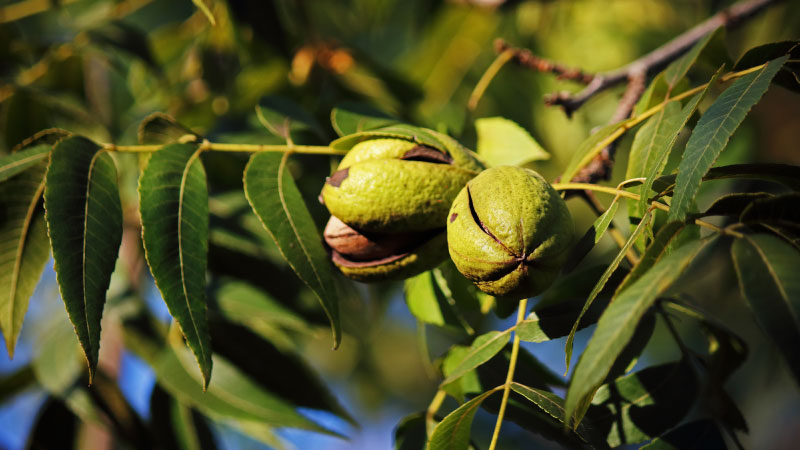State Of The Washington Apple Industry

As this year comes to a close, it’s apparent that Washington, which has long reigned supreme in the tree fruit industry, is dominating like never before. It’s on the upswing with an expected fresh apple crop of about 110 million bushels, while disastrous weather hit much of the rest of the country, most infamously Michigan.
Note: To read why Washington State Horticultural Association president David Douglas says labor remains Job Number 1 for the apple industry, click here.
The Washington Apple Commission (WAC), looking to call attention to the importance of the state’s apple business, recently commissioned a report titled “The Washington Apple Industry — Contributions to the State Economy and the Important Role of Exports.” The commission’s president, Todd Fryhover, and one of the report’s authors, Desmond O’Rourke, publisher of the “World Apple Report” and a columnist for American/Western Fruit Grower, discuss a few of the report’s findings here. Fryhover, incidentally, was able to get 20 firms to cooperate for the study, which makes it unique: “Normally they wouldn’t even share with one another.”
The study was necessary to show that in central Washington, the apple industry is absolutely the big game in town. Notes O’Rourke: “We don’t have a Boeing.” It’s an important point to drive home to people, particularly government officials, because apple growers do a notoriously poor job of blowing their own horns. “The wine industry gets so much press and it’s so much smaller,” he says.
Fryhover says the apple industry’s nature doesn’t lend itself to publicity. “There’s a good story here. It’s not corporate, it’s American families, but we employ 59,000 people. We don’t get credit not only for these jobs, but for putting out a fantastic product. We need to tell that story too,” he says, adding that if John Q. Public knew more about the industry, he’d say: “Wow. I didn’t realize they had a $7 billion impact.”
Consolidation
There were 3,500 apple growers in the state a little more than a decade ago, says Fryhover, but there are roughly only half that many today. That statistic is part and parcel of the drive to lower unit costs, says O’Rourke. While the average orchard might yield 40 bins an acre, the modern, high-density orchards can double that. “You must be at 80 just to pencil out — that’s the way the survivors in the industry are going,” he says, adding that the high-density trend has spread to all the top-producing states. “If you don’t, you can’t survive.”
Intensification
The increasing consolidation means there are actually fewer acres in production, says Fryhover. A tree survey five years ago showed 172,000 acres, and by last year that number had dropped to 165,000. But because of increasing intensification, they may be setting records for crop size, or at least coming close. Of course, that’s what happens when you pull out orchards with 350 trees per acre and replant at 1,200 trees per acre.
Food Safety
The consolidation trend is being exacerbated by the heightened awareness of food safety and the (eventual) implementation of the Food Safety Modernization Act. The retail sector, which has gone through massive consolidation itself, is helping drive this through tough new mandates. “There is tremendous pressure to comply, and what that means is a lot of paperwork, because it’s great to have a paper trail showing your workers are in compliance,” says Fryhover. “But it all comes at a cost. Small growers will find it more and more difficult to compete.”
Specialization
The emergence of issues like food safety means the creation of whole new departments at many of the top apple grower/packer/shippers. Besides food safety experts, these expanding firms have large marketing staffs, huge accounting departments, in-house information technology experts, etc. “I was really surprised at the depth of the executive talent these companies now have; it’s certainly not just growing and packing,” says O’Rourke. “There’s so much competition between them, they are right on the frontiers of technology.”
Research Commitment
Knowing that they must continually improve, and that such a commitment requires pure research, Washington growers have begun to tax themselves. They came to the realization that the best way to make that research happen is to pool their money to beef up dwindling university research budgets. In October 2011 the Washington Tree Fruit Research Commission passed a special project assessment on apples, including fresh, sliced, and processed apples. The revenue from the assessment will provide funding to establish contractual endowments with Washington State University to permanently expand and enhance the institution’s capability to conduct research of specific interest to tree fruit producers in the state. It’s no small piece of change; the assessment will terminate after a total of $32 million is collected, or eight crop years, whichever occurs first.
Export Growth
The U.S. population is growing, though not nearly as fast as in some parts of the world, and with per capita apple consumption basically flat, exports have to be increased or the industry cannot grow, says O’Rourke. It is somewhat ironic that the WAC funded this report, as until its domestic marketing program was dismantled as a result of a 2003 lawsuit, the WAC was the big promoter of apple consumption in the U.S.
The 2008 Farm Bill helped the export situation, and growers have had a great run the last two to three years. But the competition from countries such as Chile, South Africa, and New Zealand is only going to get stiffer, especially in one of the few areas of the world that’s expected to see tremendous economic growth. “Everyone, including us, is looking at Asia. It could get pretty crowded there,” says O’Rourke. “Growers will have to keep getting those unit costs down because they know that more competition is coming. There’s going to be little relaxation in the apple industry in the next 10 years.”









